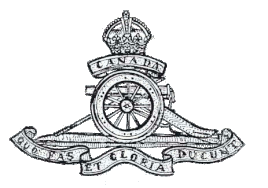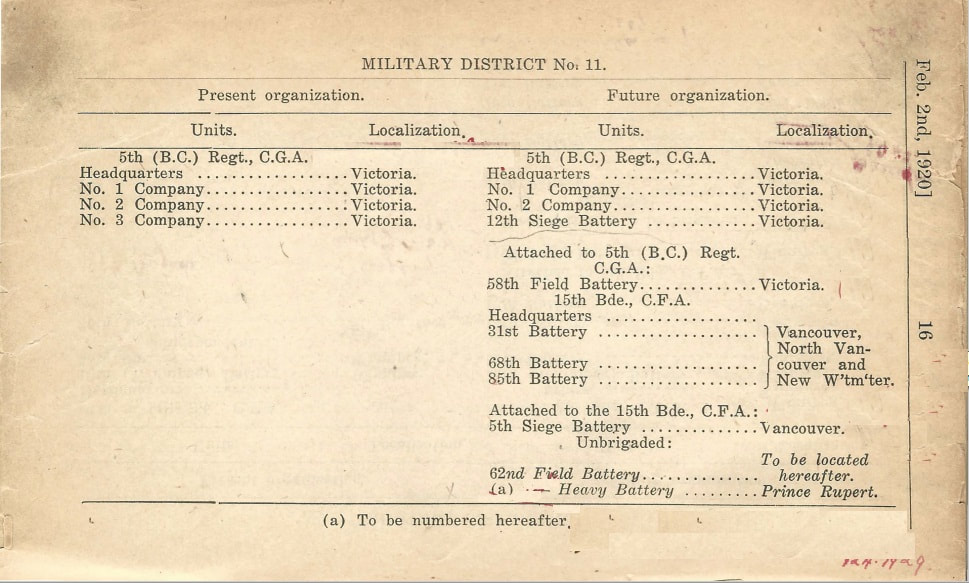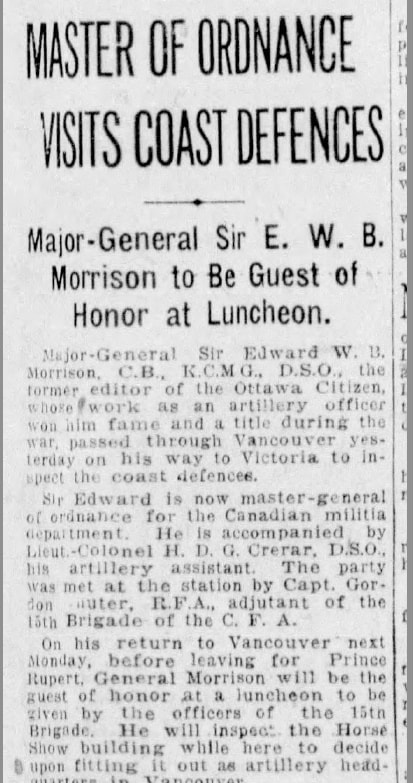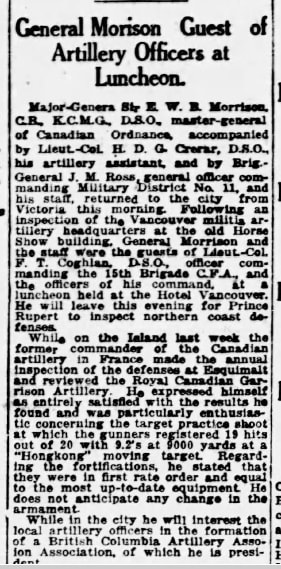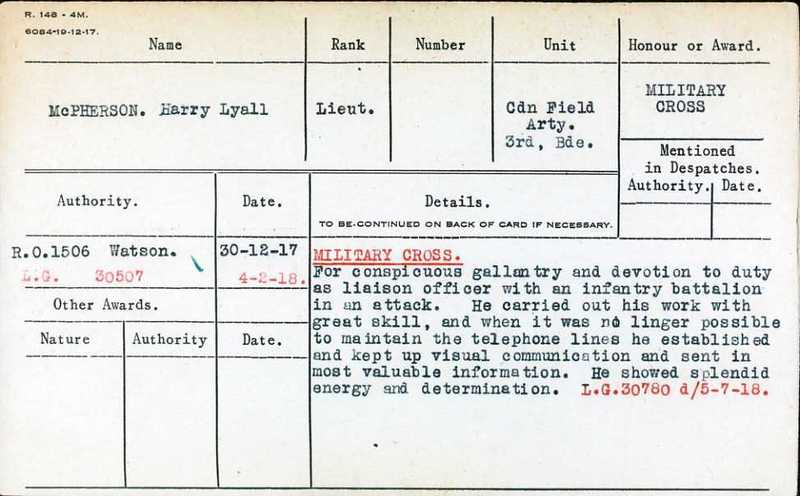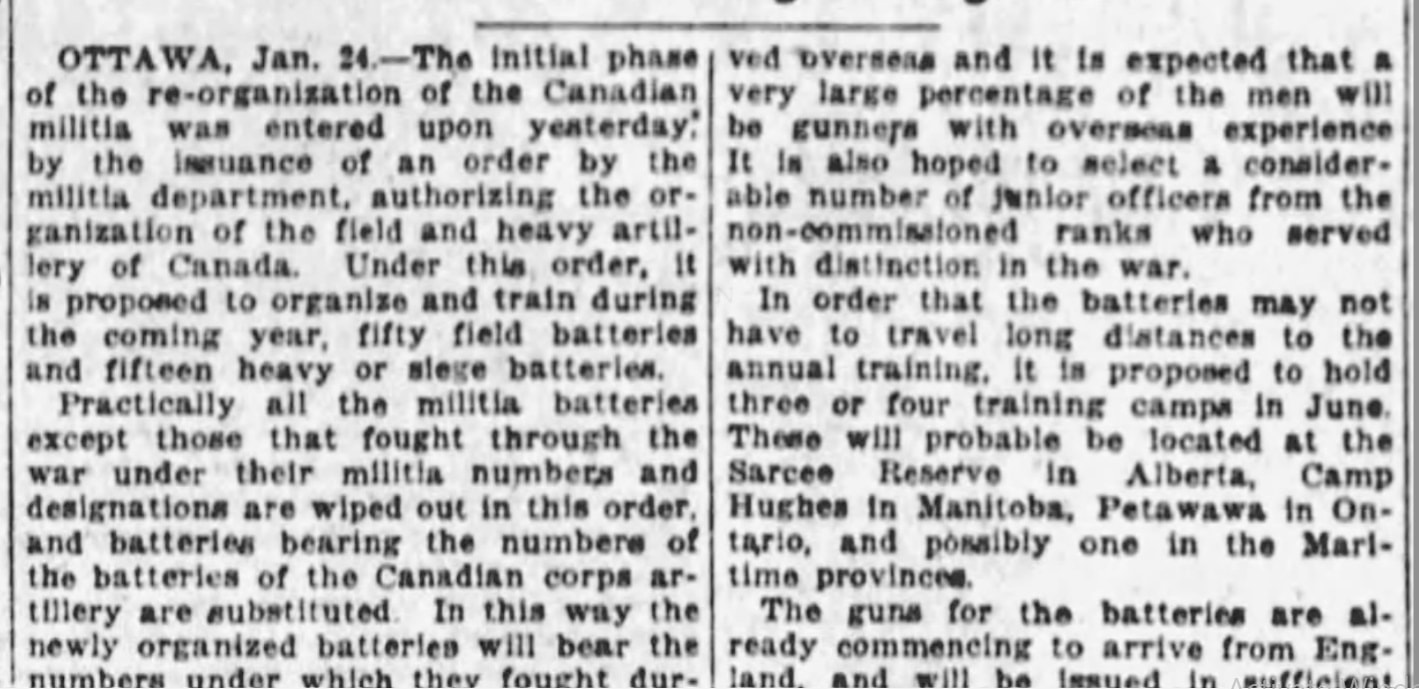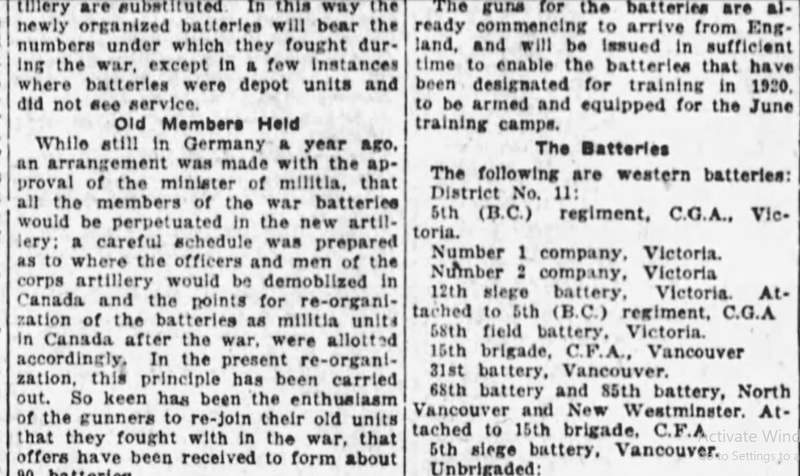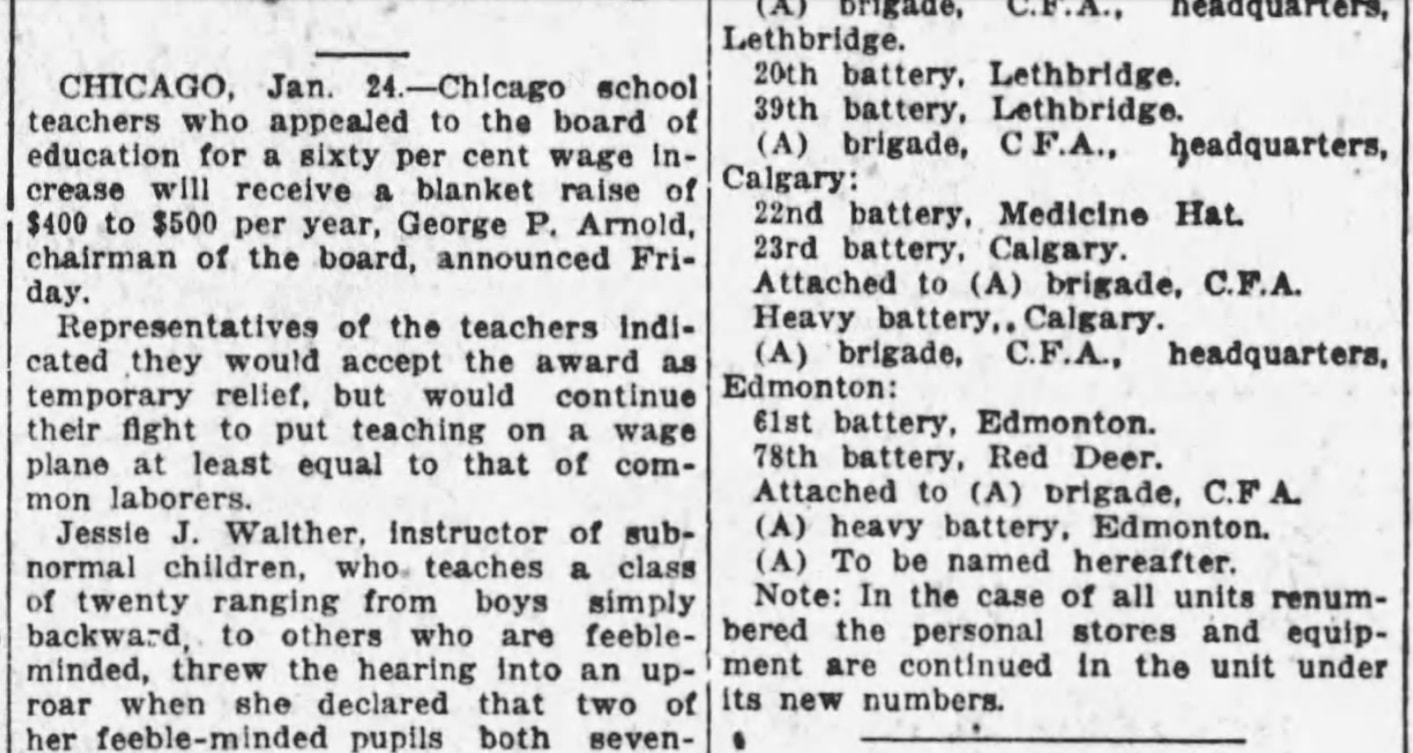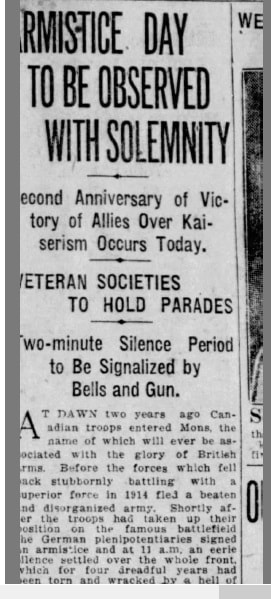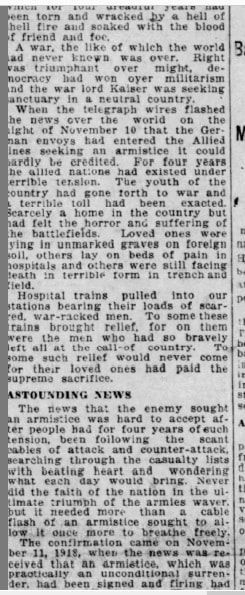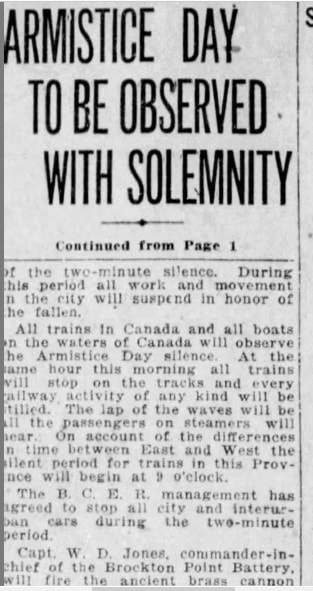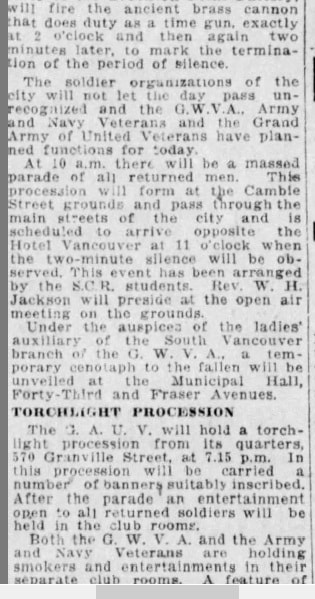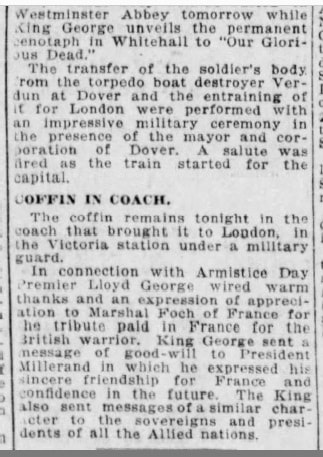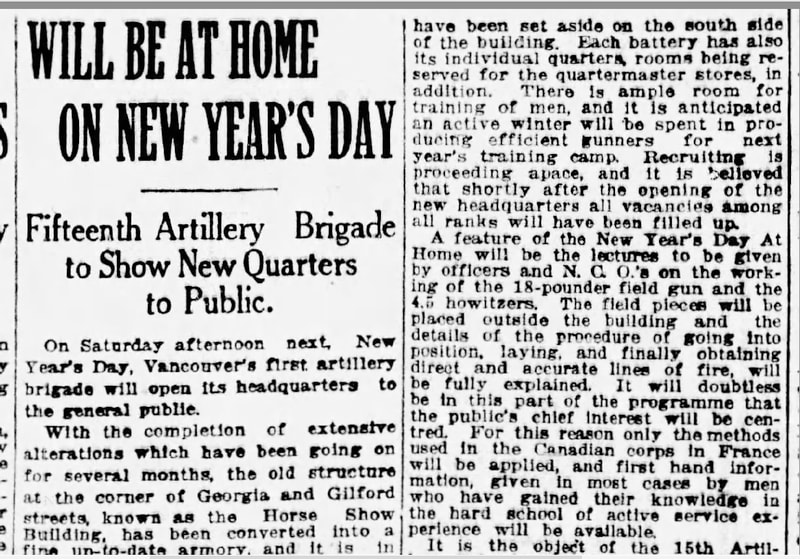15th Brigade
Canadian Field Artillery
1920
Canadian Field Artillery
1920
as at 21 August 2020
Sub-units
31st Battery
68th Battery
85th Battery
Attached – 5th Siege Battery
Detached: 58th Battery CFA-Victoria; attached to 5th (British Columbia) Regiment, Canadian Garrison Artillery
31st Battery
68th Battery
85th Battery
Attached – 5th Siege Battery
Detached: 58th Battery CFA-Victoria; attached to 5th (British Columbia) Regiment, Canadian Garrison Artillery
Key Appointments
Formation of the 15th Brigade, Canadian Field Artillery
In a letter to the Vancouver Overseas Artillery Association, Brigadier-General Andrew George Latta McNaughton informed them that the guns for the new Brigade were on the way from England. The formation of the unit had been based on recommendations of the Otter Committee.
In a letter to the Vancouver Overseas Artillery Association, Brigadier-General Andrew George Latta McNaughton informed them that the guns for the new Brigade were on the way from England. The formation of the unit had been based on recommendations of the Otter Committee.
15th Brigade, Canadian Field Artillery at Hastings Park, 3 July 1919
The City of Vancouver Archives has the photo tagged as 1919, however the Brigade wasn't formed until 1920.
Rear Row - 1,2,3,4,5,6,7,8,9,10,11,12,13,14,15
5th Row - 16, 17, 18, 19,20, 21, 22, 23, 24, 25, 26, 27, 28, 29, 30, 31
4th Row - 32, 33, 34, 35, 36, 37, 38, 39, 40, 41, 42, 43, 44, 45, 46
3rd Row - 47, 48, 49, 50, 51, 52, WO1 Charles Minter, 54, 55, 56, 57, 58
2nd Row - 59, 60, 61, Capt James Walter Woodley MC, Capt Robert Thomas Perry, 64, 65, Capt Harry Randle Bray
1st Row – Maj Harry Lyall McPherson, Maj William Allen Townsley, LtCol Frederick Coghlan, Maj David Neil Hossie, Capt Joseph Gordon Chutter, Maj Harry Lyall McPherson
The City of Vancouver Archives has the photo tagged as 1919, however the Brigade wasn't formed until 1920.
Rear Row - 1,2,3,4,5,6,7,8,9,10,11,12,13,14,15
5th Row - 16, 17, 18, 19,20, 21, 22, 23, 24, 25, 26, 27, 28, 29, 30, 31
4th Row - 32, 33, 34, 35, 36, 37, 38, 39, 40, 41, 42, 43, 44, 45, 46
3rd Row - 47, 48, 49, 50, 51, 52, WO1 Charles Minter, 54, 55, 56, 57, 58
2nd Row - 59, 60, 61, Capt James Walter Woodley MC, Capt Robert Thomas Perry, 64, 65, Capt Harry Randle Bray
1st Row – Maj Harry Lyall McPherson, Maj William Allen Townsley, LtCol Frederick Coghlan, Maj David Neil Hossie, Capt Joseph Gordon Chutter, Maj Harry Lyall McPherson
Otter Committee
In 1919, as units of the Canadian Expeditionary Force returned to Canada, the military was faced with a problem brought about by the Minister of Militia and Defence, Colonel Sam Hughes, who had ignored the existing structure of the Militia in 1914, as well as pre-existing mobilization plans drawn up in 1911, and built up the CEF from newly created units.
Long before hostilities ended, many officers and men in the Canadian Expeditionary Force overseas were giving serious thought as to what place their particular unit might have in the structure of Canada's post-war militia...(T)he mobilization which followed his "call to arms" in August 1914 had created an order of battle of newly-formed units whose numerical designations showed their complete lack of identity with (units) of long standing in Canada's militia organization. These CEF units quickly established their own individuality; and the part they played in the war had given them a high espirit de corps and traditions of their own. The problem was now was how to preserve these new traditions. See more...
In 1919, as units of the Canadian Expeditionary Force returned to Canada, the military was faced with a problem brought about by the Minister of Militia and Defence, Colonel Sam Hughes, who had ignored the existing structure of the Militia in 1914, as well as pre-existing mobilization plans drawn up in 1911, and built up the CEF from newly created units.
Long before hostilities ended, many officers and men in the Canadian Expeditionary Force overseas were giving serious thought as to what place their particular unit might have in the structure of Canada's post-war militia...(T)he mobilization which followed his "call to arms" in August 1914 had created an order of battle of newly-formed units whose numerical designations showed their complete lack of identity with (units) of long standing in Canada's militia organization. These CEF units quickly established their own individuality; and the part they played in the war had given them a high espirit de corps and traditions of their own. The problem was now was how to preserve these new traditions. See more...
|
Brigade Organization
The 15th Brigade, Canadian Field Artillery was authorized on February 2nd, 1920 with the following organization: Headquarters Vancouver; organized July 15th 1920 31st Battery, CFA – Vancouver; organized July 15th 1920 68th Battery, CFA – North Vancouver; organized July 15th 1920 85th Battery, CFA – New Westminster; organized July 15th 1920 Attached: 5th Siege Battery, CA – Vancouver; organized July 15th 1920 Detached: 58th Battery, CA – Victoria; attached to 5th (British Columbia) Regiment Canadian Garrison Artillery; September 22nd 1920 Wyn Van der Schee, A register of regiments and batteries of The Royal Regiment of Canadian Artillery (unpublished typescript, 1976), page 27; Vancouver Defended, Peter N. Moogk, page 55 | ||||||
|
Major General Sir EWB Morrrison CB KCMG DSO visit
In September 1920, the Master General of Canadian Ordnances inspected the artillery headquarters at the Horse Show building and attended a luncheon with the officers at the Hotel Vancouver. He assured the officers that he would recommend changes to the building to accommodate the unit and that equipment has been procured in England. |
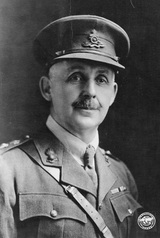
First Commanding Officer - Lieutenant-Colonel Frederick Thomas Coghlan, DSO
Frederick Thomas Coghlan DSO DDS LDS was born in Guelph, Ontario, son of Thomas Coghlan and Jane (Sweetnam) Coghlan. He was educated at the Guelph Collegiate Institute and at the University of Toronto where he obtained his DDS and LDS.
In 1904 he joined the 11th Battery, 1st Brigade of the Militia Reserve and in June 1915, organized and recruited the 29th Battery, Canadian Field Artillery (CFA). In France, Coghlan commanded the 29th Battery, CFA, at Ypres, the Somme and Vimy. After the second Battle of Ypres there followed sporadic frontal attacks on both sides without any result other than the slaughter of tens of thousands of men. Conditions were appalling. The troops lived in the squalor and dankness of the trenches, sometimes knee deep in water and mud.
In 1917, Coghlan was promoted to Acting Lieutenant Colonel and Officer Commanding, first the 11th Brigade, and later the 9th Brigade, CFA.
He was awarded the Distinguished Service Order (DSO) for gallantry at Passchendaele and the Croix de Guerre for bravery at Amiens, France. In January 1899 he married Rose Hazelton, daughter of Mr. and Mrs. James Hazelton. They had one son and two daughters.
http://www.canadaveteranshallofvalour.com/CoghlanFT.htm
February 11, 1922 Vancouver Daily World from Vancouver, · Page 17
Frederick Thomas Coghlan DSO DDS LDS was born in Guelph, Ontario, son of Thomas Coghlan and Jane (Sweetnam) Coghlan. He was educated at the Guelph Collegiate Institute and at the University of Toronto where he obtained his DDS and LDS.
In 1904 he joined the 11th Battery, 1st Brigade of the Militia Reserve and in June 1915, organized and recruited the 29th Battery, Canadian Field Artillery (CFA). In France, Coghlan commanded the 29th Battery, CFA, at Ypres, the Somme and Vimy. After the second Battle of Ypres there followed sporadic frontal attacks on both sides without any result other than the slaughter of tens of thousands of men. Conditions were appalling. The troops lived in the squalor and dankness of the trenches, sometimes knee deep in water and mud.
In 1917, Coghlan was promoted to Acting Lieutenant Colonel and Officer Commanding, first the 11th Brigade, and later the 9th Brigade, CFA.
He was awarded the Distinguished Service Order (DSO) for gallantry at Passchendaele and the Croix de Guerre for bravery at Amiens, France. In January 1899 he married Rose Hazelton, daughter of Mr. and Mrs. James Hazelton. They had one son and two daughters.
http://www.canadaveteranshallofvalour.com/CoghlanFT.htm
February 11, 1922 Vancouver Daily World from Vancouver, · Page 17
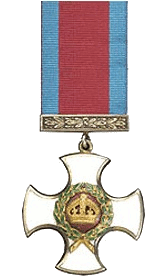
Distinguished Service Order (DSO)
The order was established for rewarding individual instances of meritorious or distinguished service in war. This is a military order for officers only, and while normally given for service under fire or under conditions equivalent to service in actual combat with the enemy, it was awarded between 1914 and 1916 under circumstances which could not be regarded as under fire. After 01 January 1917, commanders in the field were instructed to recommend this award only for those serving under fire. Prior to 1943, the order could be given only to someone Mentioned-in-Dispatches. The order is generally given to officers in command, above the rank of Lieutenant-Colonel and awards to ranks below this are usually for a high degree of gallantry just short of deserving the Victoria Cross. See more...
The order was established for rewarding individual instances of meritorious or distinguished service in war. This is a military order for officers only, and while normally given for service under fire or under conditions equivalent to service in actual combat with the enemy, it was awarded between 1914 and 1916 under circumstances which could not be regarded as under fire. After 01 January 1917, commanders in the field were instructed to recommend this award only for those serving under fire. Prior to 1943, the order could be given only to someone Mentioned-in-Dispatches. The order is generally given to officers in command, above the rank of Lieutenant-Colonel and awards to ranks below this are usually for a high degree of gallantry just short of deserving the Victoria Cross. See more...

Croix de guerre 1914–1918 (France)
The Croix de guerre 1914–1918 (English: War Cross) is a French military decoration, the first version of the Croix de guerre. It was created to recognize French and allied soldiers who were cited for their service during World War I, similar to the British mentioned in dispatches. Soon after the outbreak of World War I, French military officials felt that a new military award had to be created. At that time, the Citation du jour ("Daily Service Citation") already existed to acknowledge soldiers, but it was just a sheet of paper. See more...
The Croix de guerre 1914–1918 (English: War Cross) is a French military decoration, the first version of the Croix de guerre. It was created to recognize French and allied soldiers who were cited for their service during World War I, similar to the British mentioned in dispatches. Soon after the outbreak of World War I, French military officials felt that a new military award had to be created. At that time, the Citation du jour ("Daily Service Citation") already existed to acknowledge soldiers, but it was just a sheet of paper. See more...
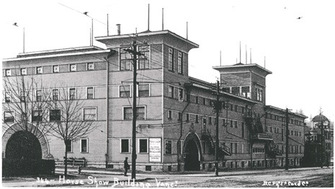
The Brigade’s First Home
The Brigade moved into the Horse Show Building on West Georgia near the entrance to Stanley Park.
It had the advantage of a riding ring and stopped at that. Damply hot in summer, misty and leaky in winter, filled with gloomy rows of dusty, unsafe galleries, reeking first of horse manure and later of Carbolic Acid … We worked in it, we played in it, and we grew to regard it with that strong affection which made the Belgian Peasantry cling to their hovels under shell fire.
Beeston, “The 15th Field Brigade”, Page 443
The Brigade moved into the Horse Show Building on West Georgia near the entrance to Stanley Park.
It had the advantage of a riding ring and stopped at that. Damply hot in summer, misty and leaky in winter, filled with gloomy rows of dusty, unsafe galleries, reeking first of horse manure and later of Carbolic Acid … We worked in it, we played in it, and we grew to regard it with that strong affection which made the Belgian Peasantry cling to their hovels under shell fire.
Beeston, “The 15th Field Brigade”, Page 443
Training
There was no funding set aside for summer training this year.
Equipment
The Brigade received 18-pounder guns for the field batteries and the 60-pounder gun for the 5th Siege Battery.
There was no funding set aside for summer training this year.
Equipment
The Brigade received 18-pounder guns for the field batteries and the 60-pounder gun for the 5th Siege Battery.

Quick Firing 18 Pounder
The term “quick-firing”, as employed at the beginning of the twentieth century, was applied to a gun that fired fixed ammunition and in addition was equipped with some effective form of recoil control. Fixed ammunition for guns had come into use in the early 1890's, after the silk cloth bag that contained the charge (propellant) had been replaced in certain breech-loading guns by a brass cartridge case that expanded when fired and thus acted as a seal for the gases at the breech. The innovation made it possible for guns of small calibre to have the cartridge case joined to the projectile, and the resulting “fixed ammunition” materially speeded up the process of loading. The 18 Pdrs were a composite of an Armstrong wire-wound gun (barrel and breech) mated to a Vickers recoil system, and sighting and elevation gear made in the Royal Ordnance factories.
Standing Orders Volume II (Heritage and Lineage) for The Royal Regiment of Canadian Artillery
The term “quick-firing”, as employed at the beginning of the twentieth century, was applied to a gun that fired fixed ammunition and in addition was equipped with some effective form of recoil control. Fixed ammunition for guns had come into use in the early 1890's, after the silk cloth bag that contained the charge (propellant) had been replaced in certain breech-loading guns by a brass cartridge case that expanded when fired and thus acted as a seal for the gases at the breech. The innovation made it possible for guns of small calibre to have the cartridge case joined to the projectile, and the resulting “fixed ammunition” materially speeded up the process of loading. The 18 Pdrs were a composite of an Armstrong wire-wound gun (barrel and breech) mated to a Vickers recoil system, and sighting and elevation gear made in the Royal Ordnance factories.
Standing Orders Volume II (Heritage and Lineage) for The Royal Regiment of Canadian Artillery

Breech Loading ( BL) 60 pounder
This British Ordnance gun was a 5 inch (127 mm) heavy field gun designed in 1903-05 to provide a new capability that had been partially met by the interim Quick Fire (QF) 4.7 inch Gun. It was designed for both horse draft and mechanical traction and served throughout the First World War in the main theatres. It remained in service with British and Commonwealth forces in the inter-war period and in front line service with British and South African batteries until 1942 being superseded by the BL 4.5 inch Medium Gun.
http://www.hackneygunners.co.uk/the-gun-battery/the-gun/
This British Ordnance gun was a 5 inch (127 mm) heavy field gun designed in 1903-05 to provide a new capability that had been partially met by the interim Quick Fire (QF) 4.7 inch Gun. It was designed for both horse draft and mechanical traction and served throughout the First World War in the main theatres. It remained in service with British and Commonwealth forces in the inter-war period and in front line service with British and South African batteries until 1942 being superseded by the BL 4.5 inch Medium Gun.
http://www.hackneygunners.co.uk/the-gun-battery/the-gun/
Start of Reorganization of Canadian Militia is made by the Authorities
Edmonton Journal news article of 24 January 1920
Edmonton Journal news article of 24 January 1920
Armistice Day 1920
All trains in Canada and all boats on the waters of Canada will observe the Armistice Day silence.... Capt. W.D. Jones, commander-in-chief of the Brockton Point Battery will fire the ancient brass cannon that does duty as a time gun, exactly at 2 o'clock and then again two minutes later. ...
All trains in Canada and all boats on the waters of Canada will observe the Armistice Day silence.... Capt. W.D. Jones, commander-in-chief of the Brockton Point Battery will fire the ancient brass cannon that does duty as a time gun, exactly at 2 o'clock and then again two minutes later. ...
|
| ||||||||||||
Obituaries

Gunner Wilbert Adams
Served with the No. 5 Siege Battery Canadian Garrison Artillery during World War I. Deceased 21 May 1920 and buried at Lower Montague, Prince Edward Island.
Served with the No. 5 Siege Battery Canadian Garrison Artillery during World War I. Deceased 21 May 1920 and buried at Lower Montague, Prince Edward Island.
Lists
The following pages contain additional information relating to the 15th Field Artillery Regiment, RCA
Honours and Awards
Trophies
Commanding Officers and Regimental Sergeants Major
Honoraries
Battery Commanders and Battery Sergeants Major
Band Appointments
Nominal Roll
Guns of the Regiment
Memorial Page
The following pages contain additional information relating to the 15th Field Artillery Regiment, RCA
Honours and Awards
Trophies
Commanding Officers and Regimental Sergeants Major
Honoraries
Battery Commanders and Battery Sergeants Major
Band Appointments
Nominal Roll
Guns of the Regiment
Memorial Page
